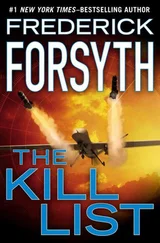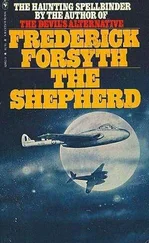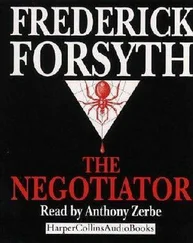Frederic Forsyth - The Cobra
Здесь есть возможность читать онлайн «Frederic Forsyth - The Cobra» весь текст электронной книги совершенно бесплатно (целиком полную версию без сокращений). В некоторых случаях можно слушать аудио, скачать через торрент в формате fb2 и присутствует краткое содержание. Жанр: Триллер, на английском языке. Описание произведения, (предисловие) а так же отзывы посетителей доступны на портале библиотеки ЛибКат.
- Название:The Cobra
- Автор:
- Жанр:
- Год:неизвестен
- ISBN:нет данных
- Рейтинг книги:5 / 5. Голосов: 1
-
Избранное:Добавить в избранное
- Отзывы:
-
Ваша оценка:
- 100
- 1
- 2
- 3
- 4
- 5
The Cobra: краткое содержание, описание и аннотация
Предлагаем к чтению аннотацию, описание, краткое содержание или предисловие (зависит от того, что написал сам автор книги «The Cobra»). Если вы не нашли необходимую информацию о книге — напишите в комментариях, мы постараемся отыскать её.
The Cobra — читать онлайн бесплатно полную книгу (весь текст) целиком
Ниже представлен текст книги, разбитый по страницам. Система сохранения места последней прочитанной страницы, позволяет с удобством читать онлайн бесплатно книгу «The Cobra», без необходимости каждый раз заново искать на чём Вы остановились. Поставьте закладку, и сможете в любой момент перейти на страницу, на которой закончили чтение.
Интервал:
Закладка:
By the time it was finished and ready for occupation, it could accommodate over two hundred men, provided they had among them enough engineers, chefs and handymen to maintain all the facilities in running order. Kind to a fault, the Navy even left behind a sports shed with masks, snorkels and flippers. Whoever was going to be sequestered there could even snorkel the reefs. And there was a library of paperback books in English and Spanish.
For the sailors and engineers, it was not an arduous mission. On the horizon was Diego Garcia, a mini-America in the tropics equipped with every facility the U.S. serviceman far from home expects-which is the lot. And the British tars were welcome to visit, which they did. The only disturbance in this tropical paradise was the constant thunder of the bombers coming and going on their training missions.
Eagle Island had one other characteristic. It was almost a thousand miles from the nearest mainland, over a sea teeming with sharks, and virtually escape-proof. That was the point. THE CAPE VERDE ISLANDS are another zone blessed with year-round sunshine. In mid-May, the new flying school on Fogo Island was officially opened. Once again, there was a ceremony. The Defence Minister flew in from Santiago Island to preside. Happily for them all, Portuguese was the only language spoken.
The government had, after rigorous testing, selected twenty-four young Verdeans to become air cadets. Not all might achieve their wings, but there had to be a margin for those who did not make it. The dozen Tucano twin-seat trainers had arrived from Brazil and were lined up in a neat row. Also at attention were the dozen instructors on loan from the Brazilian Air Force. The only person missing was the commanding officer, identified as a certain Major Joao Mendoza. He was detained on flying duties elsewhere and would join his command within a month.
It mattered little. The first thirty days would be spent on classroom work and aircraft familiarization. Informed of all this, the minister nodded his grave assent and approval. There was no need to tell him that Major Mendoza would be arriving in his personal airplane, which he could afford to fly for recreation.
Had the minister known about the aircraft, which he did not, he might have understood why the storage tank of JP-8 fuel for the trainers was separate from the much more volatile JP-5 fuel needed by high-performance Navy jets. And he never penetrated the extra hangar dug into the rock face with steel doors. Told it was a storage facility, he lost interest.
The eager cadets settled into their dormitories, the official party left for the capital and classes started the next day. IN FACT, the missing CO was at 20,000 feet over the gray North Sea east of the English coasts on a routine navigational exercise with his instructor. Cdr. Keck was in the rear cockpit. There had never been controls in the rear cockpit, so the instructor was in a "total trust" situation. But she could still monitor the accuracy of intercepts of imaginary targets. And she was content with what she saw.
The following day was free time because the vital night flying would commence the night after. And then finally RATO and gunnery practice, for which the targets would be brightly painted barrels floating in the sea, dropped at agreed locations by one of their group who had a fishing boat. She had no doubt her pupil would pass with flying colors. She had quickly noted that he was a natural flier and had taken to the old Bucc as a grebe to water.
"Have you ever flown with rocket-assisted takeoff?" she asked him a week later in the crew hut.
"No, Brazil is very large," he joked. "We always had enough land to build long runways."
"Your S2 Bucc never had RATO because our aircraft carriers were long enough," she told him. "But sometimes in the tropics the air is too hot. One loses power. And this plane was in South Africa. It needs help. So we have no choice but to fit RATO. It will take your breath away."
And it did. Pretending the huge Scampton runway was really too short for unassisted takeoff, the riggers had fitted the small rockets behind the tail skid. Colleen Keck briefed him carefully on the takeoff sequence.
Park right at the end of the tarmac. Hand brakes on hard. Run up the Spey engines against the brakes. At the moment they can hold no more, release brakes, power to maximum, flick the rocket switch. Joao Mendoza thought a train had hit him in the back. The Buccaneer almost reared and threw herself down the tarmac line. There was a blur of runway, and she was airborne.
Unbeknownst to Cdr. Keck, Major Mendoza had spent his evenings studying a pack of photos sent to him at the inn by Cal Dexter. They showed him the Fogo runway, the approach lights pattern, the touchdown threshold coming in from the sea. The Brazilian had no doubts left. It would be, as his English friends liked to call it, a piece of cake. CAL DEXTER had examined the three pilotless drones, the Unmanned Aerial Vehicle, or UAVs, manufactured by the USA with enormous care. Their role was going to be vital in the Cobra's coming war. He finally discarded the Reaper and the Predator and chose the "unweaponized" Global Hawk. Its job was surveillance and only surveillance.
Using Paul Devereaux's presidential authority, he had lengthy negotiations with Northrop Grumman, the manufacturers of the RQ-4. He already knew that a version dedicated to "broad area maritime surveillance" had been developed in 2006 and that the U.S. Navy had placed a very large order.
He wanted two extra capabilities, and he was told there need not be a problem. The technology existed.
One was for the onboard memory bank to memorize the images brought back by the TR-1 spy planes of almost two score ships as seen directly from above. The pictures would be broken down into pixels that would represent a distance no more than two inches on the deck of the real ship. It would then have to compare what it was looking down at with what was in its data bank and inform its handlers, miles away at their base, when it found a match.
Second, he needed communications-jamming technology, enabling the Hawk to surround the vessel beneath it with a ten-mile-diameter circle in which no communication of any electronic kind would work.
Though it packed no rocket, the RQ-4 Hawk had all the details Dexter needed. It could fly at 65,000 feet, far out of sight or sound of what it was watching. Through sun, rain, cloud or night, it could survey forty thousand square miles a day and, sipping its fuel, could stay up there for thirty-five hours. Unlike the other two, it could cruise at 340 knots, far faster than its targets.
By the end of May, two of these marvels had been installed and were dedicated to Project Cobra. One was set up to operate out of the Colombian coastal base of Malambo, northeast of Cartagena.
The other was on the island of Fernando de Noronha, off the northeastern coast of Brazil. Each unit was lodged in a facility set away from all prying eyes on the other side of the air base. On the Cobra's instruction, they began to prowl as soon as installed.
Although operated on the air bases, the actual scanning was accomplished many miles away in the Nevada desert at U.S. Air Force Base Creech. Here, men sat at consoles staring at the screens. Each had a control column like that of a pilot in his cockpit.
What each operator saw on his screen was exactly what the Hawk could see staring down from the stratosphere. Some of the men and women in that quiet, air-conditioned control room at Creech had Predators hunting over Afghanistan and the border mountains leading to Pakistan. Others had Reapers over the Persian Gulf.
Each had earphones and a throat mike to receive instructions and inform higher authority if a target hove into view. The concentration was total and therefore the shifts short. The Creech control room was the face of wars to come.
Читать дальшеИнтервал:
Закладка:
Похожие книги на «The Cobra»
Представляем Вашему вниманию похожие книги на «The Cobra» списком для выбора. Мы отобрали схожую по названию и смыслу литературу в надежде предоставить читателям больше вариантов отыскать новые, интересные, ещё непрочитанные произведения.
Обсуждение, отзывы о книге «The Cobra» и просто собственные мнения читателей. Оставьте ваши комментарии, напишите, что Вы думаете о произведении, его смысле или главных героях. Укажите что конкретно понравилось, а что нет, и почему Вы так считаете.










